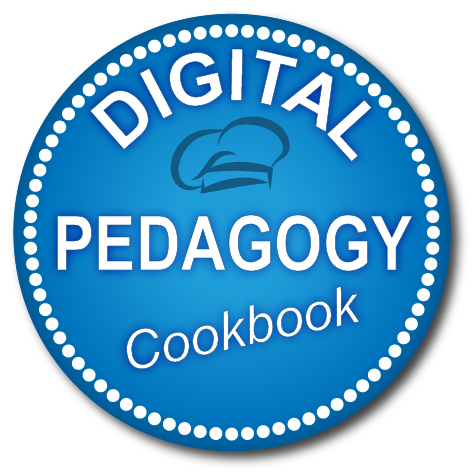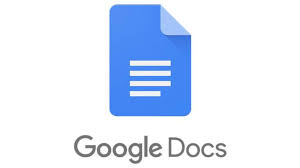DigCompEdu Competence area
Progression Level
Minimum digital skills level of Students
Minimum digital skills level of Educators
Learning/Teaching situation
To make formative assessment.
Target group
Teachers who want to make formative assessment.
Ingredients
- PC/laptop
- Internet connection
- Google account
Description
Formative Assessment means to separate GRADING (summative evaluation) from GUIDING (formative assessment). The guidance teachers can provide after students submit printed copies of their “completed” work has much less leverage than what they can do earlier, via guiding (providing feedback, either directly as an instructor, or indirectly via structured peer review) and scaffolding (providing structures that help students along a process).
GRADING should be straightforward: students are given a rubric against which their work will be evaluated, and the teacher compares each paper against this rubric to generate a score. As separate documents, rubrics can be used formatively (prior to submitting work) as elaborate checklists for self-assessment and peer review. Used summatively, they should provide a number grade, and are also a place for a teacher’s final comments on the work as a whole. In this model, grading (via separate rubric) and guiding (via the techniques below) are separate, so that the final work is not “marred” by grades and comments.
GUIDING is much more dependent on access to a student draft, where comments are attached to specific places. When the draft is digital rather than paper, much more becomes possible. Unlike “red pen markup” onto printed assignments, comments can be edited, allowing a teacher to reflect on the balance of plus, minus, and interesting comments before submitting. Microsoft Word supports commenting (although not for the faint of heart). With Google Docs, comments are very easy to make and view.
.
How to do it (step by step)
Step 1
With Google Docs, when a teacher is done commenting and closes the browser tab, the comments are sent in a summary email to the author, who can now respond by asking for clarification (commenting back) or fixing the problem (and “resolving” the comment, making it disappear from the margin.) Some teachers prefer to ask students not to click the “resolve” button, so that the teacher can verify the problem is solved before hiding the comment.
Formative Assessments with Google Docs can take many forms.
Here are a few:
Bell Ringers and Exit Tickets with Google Forms: at the start of a class, students indicate prior knowledge; at the end, success of learning objectives. Form responses should include both multiple-choice (for automatic grading and fast generation of data) and text response.
Writing Prompts with Document Templates:
Create a document with a text selection and/or image, and some guidance. Because it is “view-only” it is a “template” for students. Students make copies of the document can edit, and compose their own responses, which will be eventually developed into full pieces.
Staged Group Feedback with Google Forms:
Students copy and paste a topic sentence, an example of an adverb, or any other components your assignment calls for into a Google form. Get a quick sense of how well they understand the terms. Go over the form responses (which are in a spreadsheet) anonymously with the class as examples. The responses can be coded with spreadsheet cell-coloring.
Chat Exchanges with Google Docs:
When two or more users are looking at the same document, an in-document chat box can be opened. This is useful when all students are working on their documents; the teacher opens each document to have a “silent conference” with the student while both can see their work.
Draft Readiness “Pre-Flight Checklists” with Google Forms:
Students enter either a yes/no check or a copy/paste sample (as in 3. above) to indicate they have met all the requirements of the assignment before submitting it to the teacher for comment. This can prompt higher quality drafts.
Draft Readiness with Google Spreadsheet Rubrics: Students can view the teacher-supplied rubric spreadsheet and change the shading for the cells that they feel best describe their work, and submit this when they submit their draft.
Peer Editor “Workshopping” / Comment Exchanges with Google Docs:
As in 6., but with peer editors looking at the student’s work and rubric and making comments. This is done simultaneously (both peers edit each others’ work), followed by either individual correction or discussion.
Teacher/Student Comment Exchanges with Google Docs:
This is the showcase use described above, and in videos and documents below. Teachers comment, students revise, teachers approve (resolve). Resolving problem comments in the margins continues up to a teacher-set deadline for revisions prior to final grading.
There is more…
Google supports the following formative exchanges on documents:
- Highlight text and insert comment with button or CTRL+M
- Teachers can limit themselves to “comment-only” access, so that only the writer can actually change the text on a document. Alternately, this can be a limit for peer editors, but teachers can allow markup within the document.
- Notify user of comments once commenter has closed document tab
- Responses to comments generate comment threads to discuss issue
- Comment thread can be closed (resolved) when issue is addresse
- When two or more users are looking at the same document, an in-document chat box can be used
Considerations
- A workflow needs to be established so that the teacher has easy access to all student work for a given assignment.
- Students can use simultaneous document commenting to horse around.
- A symbol or shortcut system needs to be established so that comments do not take too long to compose (e.g. +, -, ?, ! or emoticons).
- Highlight an entire paragraph for a comment makes it difficult to then comment on individual words within it. An understanding that whole paragraph comments are attached to the final punctuation mark can solve this.
- If a teacher can edit the document, comments can be bypassed by changing the color of text (e.g. if green, it’s wonderful; if red, it needs attention).
- Not all students are mature enough for respectful peer-editing.
- Accessing and commenting on student documents needs to be both easier and more powerful than simply photocopying all student printed work, marking it up with comments, and returning it for edits.

